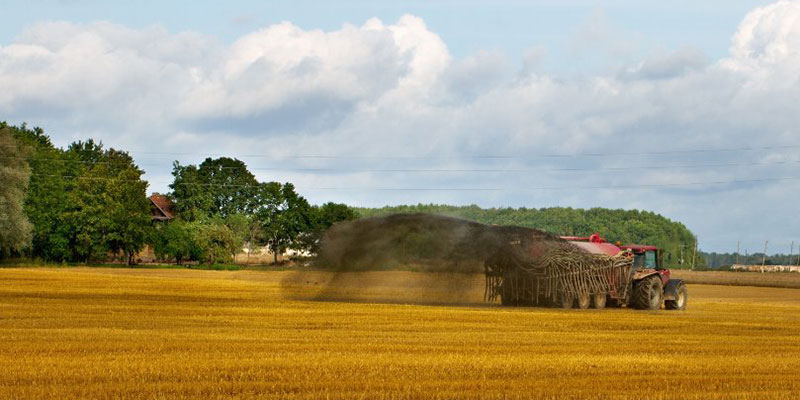
Runoff from fertilized farmland is a major source of phosphorous pollution.
Sustainable food systems and wastewater treatment are keys to avoiding global phosphorus crisis
Phosphorus is an important, but finite, element used in fertilizers, animal feed, and food additives. It’s extracted from phosphate rock, a limited resource: Five countries control 85% of global phosphate rock reserves, and just four countries accounted for 72% of global production of phosphate rock in 2021.
In a newly released report, “Our Phosphorus Future,” a team of international scientists say that mismanagement of this important nutrient is a double-edged sword that has led to two major crises.
A significant hike in fertilizer prices has made phosphorus-based fertilizer unaffordable for many struggling farmers, negatively impacting crop production and threatening food security worldwide. At the same time, too much phosphorus flows into rivers and lakes from wastewater treatment plants and fertilizer runoff, negatively impacting water quality and biodiversity in freshwater systems.
Reducing and Recycling Phosphorus
To tackle the twin phosphorus crises that affect food and water security, the authors call on global leaders to adopt what they refer to as the “50:50:50” goal, which strives for a 50% reduction in phosphorus pollution worldwide and a 50% increase in phosphorus recycling by 2050.
The report outlines several strategies to help achieve the 50:50:50 goal, including:
- Using phosphorus-rich manure from livestock production as a crop fertilizer
- Opting for more sustainable, plant-based foods to reduce our dependence on animal food products, and the amount of fertilizer used to grow their feed
- Reducing the amount of food that is wasted
- Upgrading wastewater treatment plants with technologies that can remove phosphorus from wastewater for reuse rather than discharging it into freshwater systems
Successfully following these goals can have a major impact. Global food waste is currently estimated to be around 931 million tons a year, so wasting less will reduce the demand for animal and plant foods, as well as the phosphorus used to produce them. And, improving wastewater treatment for reuse of phosphorus will address both the phosphorus supply crisis and the water-quality crisis, which ultimately affect both food and water security.
Professor Bryan Spears, a limnologist at the UK Centre for Ecology & Hydrology, and one of the lead authors of the report, said:
Many countries are highly dependent on imported phosphorus fertilizer for food production, leaving them exposed to fertilizer price fluctuations. More efficient use of phosphorus in agriculture and increased recycling, for example from wastewater, can increase resilience in the food system while reducing pollution of lakes and rivers that are biodiversity hotspots and important for drinking water supply.
Isabelle Vanderbeck of the United Nations Environment Programme, a co-author of the report, added:
UNEP recognises the complexity of the nutrient challenge and the potential for economic benefits of improving phosphorus sustainability. Governments should take decisive actions to avoid significant environmental and societal harm due to phosphorus mismanagement.
According to the report, if the world were to adopt the 50:50:50 goal, we could create a sustainable food system that would be able to generate sufficient phosphorus to grow enough food to feed the current world population four times over. It also would reduce the annual cost of commercial fertilizers by around $20 billion, and save more than $300 billion a year in cleanup costs to prevent eutrophication and harmful algal blooms in polluted waterways.
The Role of Wastewater Treatment
Fluence offers solutions for dealing with phosphorus in wastewater effluent. We have technologies that can reduce phosphorus to levels suitable for safe release into the environment, including Aspiral™ modular plants, which use membrane aerated biofilm reactor (MABR) technology to safely recycle nutrient-rich wastewater for reuse in crop irrigation and other nonpotable applications.
Existing conventional aerobic wastewater treatment plants can be upgraded with our SUBRE offering, which uses towers of MABR units to increase capacity and improve the quality of the effluent, while also dramatically reducing the energy used in treatment. Contact Fluence to see how we can tailor a solution that specifically addresses your phosphorus challenges and other needs.
